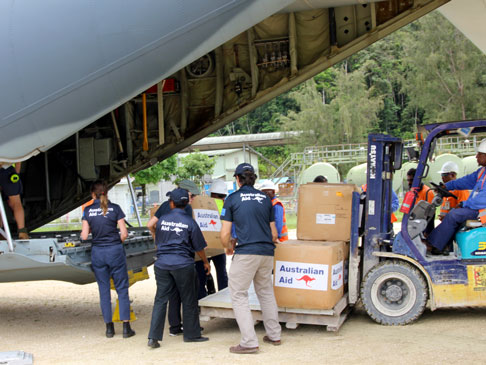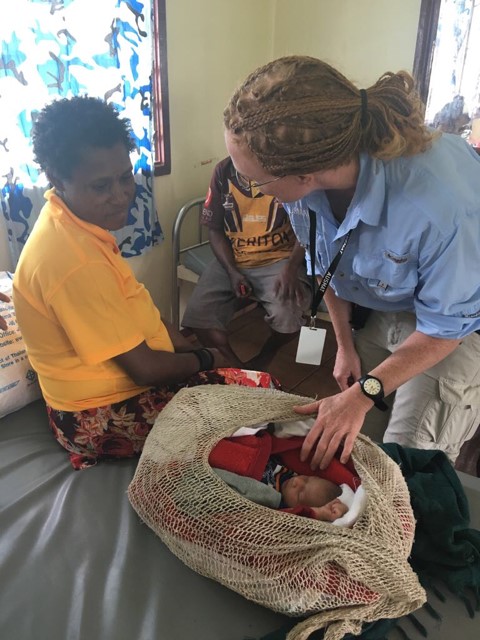Crisis Hub
On 26 February 2018, an earthquake of 7.5 magnitude at 9 km depth struck the Highlands region of Papua New Guinea, particularly Hela and Southern Highlands provinces, affecting approximately 270,000 people. A series of strong aftershocks were also reported across the Highlands, including a 6.7 magnitude quake on 7 March. On 1 March, PNG Prime Minister O'Neill announced a State of Emergency in Hela, Southern Highlands, Western and Enga Provinces. PNG police reported that at least 125 people were killed by the earthquake and aftershocks.
Australia's humanitarian assistance
Following a request from the PNG Government, Australia provided a $5 million assistance package to support the PNG Government's relief efforts. This included:
- Up to $3 million for Australian and PNG non-government organisations that were active in the highlands region, to support recovery in sectors such as agriculture, health and protection.
- Up to $1 million to support vulnerable women and children in the earthquake-affected areas, in partnership with UN Women, the UN Population Fund, International Planned Parenthood Federation and UNICEF.
- Up to $400,000-worth of electrical transformers to re-establish reliable power supplies in Hela and Southern Highlands Provinces.
- Up to $200,000-worth of Australian Government humanitarian supplies.
- The deployment of a 15 person Australian Medical Assistance Team (AUSMAT), including doctors and nurses who worked within the Mendi hospital providing specialist maternal and child health care, and with Southern Highlands Provincial Health Authority to help establish an emergency operations centre to monitor disease outbreaks. The team treated 1025 patients between 26 March and 9 April, including conducting 37 surgeries and assisting five births.
Australia's Defence Force support
The Australian Defence Force played a significant role in the relief effort, supporting the PNG Defence Force and PNG authorities in their response activities. ADF assistance focused on logistical support and the transport of humanitarian supplies.
Australia deployed an RAAF C-130J, three CH47F Chinook helicopters and 110 ADF personnel to help distribute supplies to the affected region. Humanitarian activities included:
- Sixty flights by the C-130J to transport Australian and partner medical and humanitarian supplies to warehouses in the Southern Highlands and Western Highlands.
- 55 hours of flight time by the Chinooks to deliver supplies from the warehouses to affected villages.
- Aerial surveillance and mapping of damage to arterial roads.
- Overall, over 660 tonnes of humanitarian supplies were transported by the ADF.
Technical expertise
Australia also supported the deployment of specialists to assist with humanitarian activities and respond to emerging needs. This included:
- Two Australian-funded logistics specialists to assist with the distribution of relief supplies.
- Three DFAT humanitarian specialists to help ensure supplies reach vulnerable communities.
- An Australian-funded specialist who worked in the PNG National Disaster Centre to assist with information management and coordination.
- Three Australia Assists specialists, who were deployed to UN agencies in PNG as part of ongoing relief and recovery efforts.
More information
Media releases
- 28 March 2018: Australian medical staff deploy to Papua New Guinea
- 20 March 2018: Humanitarian assistance to Papua New Guinea
- 7 March 2018: Further humanitarian support to Papua New Guinea
- 1 March 2018: Humanitarian assistance to Papua New Guinea
- 28 February 2018: Papua New Guinea earthquake
Follow @AusHumanitarian on Twitter for more information about Australia's humanitarian assistance.




